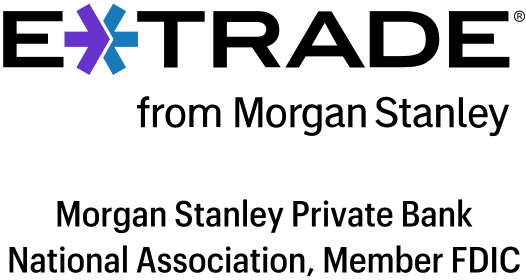What Happens If a Neobank Fails?
A failed neobank can mean delays or other hurdles to accessing your money.

Many, or all, of the products featured on this page are from our advertising partners who compensate us when you take certain actions on our website or click to take an action on their website. However, this does not influence our evaluations. Our opinions are our own. Here is a list of our partners and here's how we make money.
Updated on Oct 25, 2024.
Customers at neobanks Yotta, Copper and others lost access to their money in mid-May after the middleware fintech firm Synapse Financial Technologies filed for bankruptcy. The bankruptcy case is ongoing, but Evolve Bank & Trust, one of the banks involved, has released a timeline for distributing funds held at the bank to affected consumers (also called “end users”) who had money at neobanks that partnered with Synapse. Evolve set up a new website for those affected called reconciliationbyevolve.com and a dedicated call line (877) 873-0008 (only weekdays). The timeline is the following, according to the site:
Nov. 4, 2024: A third-party company, Rust Consulting, will email consumers who have an account balance held at Evolve. The email will include login information to make an account on Evolve’s new website and instructions for transferring out money. Consumers with balances of $100 or more can receive payment as ACH transfer, wire, check, among other options. Consumers with lower balances will receive an online payment, unless they request a check.
Payments will be sent within seven days, once consumers finalize their information, including payment option, on Evolve’s new site.
Some other dates to know:
Nov. 14, 2024: For affected consumers who have not received an email by this date, visit Evolve’s new website for more information.
Dec. 4, 2024: For affected consumers who don’t claim their payment by this date, they will receive a check.
Background on Synapse:
Synapse served as an intermediary tech firm between consumer-facing neobanks such as Yotta and Copper and the traditional banks that held money on behalf of the neobank customers. The main issue has been that Synapse and partner banks, including Evolve Bank, had contradictory customer account records which led to confusion for months over which funds belong to which customers. A July letter from several U.S. senators to Synapse and partner banks called out a potential shortfall of $65 to $96 million that existed between what consumers deposited and the money held at partner banks.
When a bank fails, the Federal Deposit Insurance Corp. tends to act quickly to protect customers’ money and arranges for a healthy bank to buy the failed bank. This process happened in March 2023 when Silicon Valley Bank failed. But what happens if a neobank fails?
A neobank is a financial tech company that isn’t a bank and instead partners with a bank in order to offer FDIC-insured checking or savings accounts. But a bank partnership doesn’t mean a neobank failure would be identical to a bank failure. Let’s break down how accounts work at neobanks and what can happen to your money if you’re at a neobank that fails.
FDIC-insured accounts at banks vs. neobanks
Federal deposit insurance is what protects your money, up to $250,000 per depositor, per account type and per insured institution, in the event that a bank fails. Banks have FDIC insurance — which is often disclosed as “Member FDIC” — and credit unions have the equivalent insurance through the National Credit Union Administration. This protection ensures you get your money back if a bank fails. This insurance works differently at neobanks.
Neobanks, such as Chime, Current and Greenwood, have a partnership with one or more banks that enables their customers’ money to be held in FDIC-insured accounts at these banks. But the FDIC stated in a July 2022 fact sheet that “by federal law, the FDIC only insures deposits held in insured banks” and only if a bank fails. In other words, FDIC insurance applies if a neobank’s partner bank fails, but not if the neobank does. And even then, only if the neobank has kept accurate records of customer funds deposited at the partner bank.
You can still get your money back if a neobank goes bankrupt, but likely not as immediately or smoothly as you would in a bank failure. The FDIC only steps in to help banks. Here’s a quick breakdown of what neobank customers may experience if a neobank fails:
Customers may have to wait for bankruptcy proceedings in order to get their money back.
Customers may lose account access since a neobank controls customers’ account access. If the neobank abruptly closes, there’s no guarantee that it offers continuous access to funds. Losing account access can mean not having access to money already deposited and services, such as direct deposits, check deposits, debit card usage and ATM withdrawals.
However, if a neobank closes on its own terms, there have historically been opportunities for customers to withdraw all their money ahead of time. And for the customers who don’t, a neobank may send checks of remaining balances to the customers’ addresses on file.
» Learn more: What is a neobank?

Member FDIC
Forbright Bank Growth Savings

4.00%
$0

Member FDIC
Axos ONE® Savings

4.31%
$1,500

Member FDIC
Varo Savings Account

5.00%
$0

Member FDIC
E*TRADE Premium Savings

3.50%
$0
A neobank failure might mean delays in accessing funds
Let’s say a nonbank neobank fails. “If your money is at [a] bank, you’ll probably eventually get it back, but we don’t know what problems are going to occur” at the nonbank, says Lauren Saunders, associate director at the National Consumer Law Center. She says that potential issues from a nonbank’s failure could include a lack of access to your money, accounts being frozen, transactions not going through, the nonbank’s app not working, or the account balance displaying a wrong number.
“Front-end fintech companies that are doing this banking as a service in partnership with a bank, what they’re good at is building apps and marketing,” says Suzanne Martindale, senior deputy commissioner of the California Department of Financial Protection and Innovation’s consumer division. “But the questions are always going to be on the back end. Have they thought through and baked in consumer protections in their product, including robust customer service?”
When the FDIC takes over a failed bank, the agency typically ensures that customers have continuous access to funds and services, such as mobile apps and branches. These regulatory actions don’t apply to a nonbank neobank. In fact, it’s possible for you to not get back all your money if a neobank goes bankrupt and there are issues, such as with disbursement or customer records.
“FDIC insurance isn’t going to help you get customer service” at a nonbank, Saunders says.
Recent neobank closures
In practice, several U.S. neobanks that have closed gave their customers time to withdraw their money.
The LGBTQ-focused neobank Daylight closed operations in June 2023, according to the website. In an announcement a month earlier, the neobank, which partnered with the bank Pathward, said that banking customers’ money was safe and the decision to close was “unrelated to the wider banking crises happening globally.” The neobank said customers were given instructions for how to transfer money out weeks before the closure date.
The German neobank N26, which partnered with Axos Bank, shuttered its U.S. operations in January 2022. Similar to Daylight, N26 notified customers ahead of time and explained how to transfer money out. For customers with funds left in accounts after closing day, the neobank stated that it’d issue a paper check with the remaining balance to the address on file.
On the other hand, Simple, a popular neobank in the 2010s which the bank BBVA acquired, had a difficult shutdown process in 2021. When Simple customers were migrated to BBVA, there were account access problems, an overwhelmed call center, and an apology from the bank.
Losing access to funds is an issue at fintech firms
Access issues aren’t limited to neobanks that close. The neobank Chime abruptly froze or closed customer accounts in 2021 in what the company said was a crackdown on fraud, according to the nonprofit news site ProPublica’s report. And in October 2022, news sites reported more than 100 N26 customers in Europe, including Ukrainian refugees, had their accounts suddenly closed.
Neobanks aren’t the first type of fintech company to partner with banks to offer FDIC-insured accounts. Prepaid card companies such as Netspend have done this since at least the start of the millennia. Prepaid debit cards work like debit cards but aren’t linked to a checking account.
“We’ve seen over the years a lot of problems with prepaid cards and the Chime account and others that have had difficulty with people accessing their money,” Saunders says.
Thousands of RushCard prepaid card customers were locked out of their accounts for up to several weeks in 2015 due to a technical issue, and Walmart prepaid card customers experienced a shutdown for several days in 2016.
Tips when using a neobank
A neobank’s typically easy-to-join, low-cost banking experience can be appealing, but keep these tips in mind:
Confirm your account is FDIC insured and by which bank. Scroll to the bottom of a neobank’s website for a disclaimer or link to an account disclosure that names the bank offering accounts. Type that name into the FDIC’s BankFind tool to confirm that the bank’s insured by the FDIC. But remember that if a neobank fails, FDIC insurance doesn’t kick in and you may end up recovering your funds during a bankruptcy proceeding.
Know the customer support channels and hours. If something goes wrong, can you call the neobank, set up a live chat or otherwise reach the bank? And at what hours? You might want to do a test run.
File a complaint if issues arise that aren’t addressed. Keep records of the issues and your attempts to contact the neobank and file a complaint with the Consumer Financial Protection Bureau or another regulator.
Know all your banking options. When choosing where to bank, remember that traditional banks and credit unions tend to be more established than neobanks do.
These questions are vital in determining what happens to your money if a company goes under: "At the end of the day, the question to ask is, 'Who's holding my money? Where are my deposits being stored?'" Martindale says.











